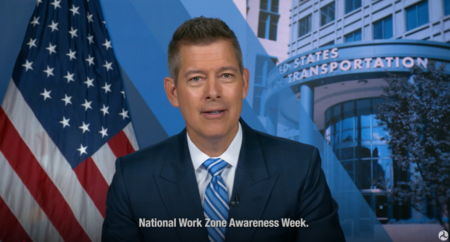The organization that represents the USA’s roadway safety industry, the ATSSA (American Traffic Safety Services Association), has launched an initiative to gauge highway and transportation industry support for developing a new road safety data forum, as part of its ‘Toward Zero Deaths’ program.
The ATSSA is planning an Open Forum discussion that will be held in conjunction with its 47th Annual Convention & Traffic Expo at the Phoenix Convention Center, on February 10-14, 2017. Participants need not be ATSSA members to attend the initial discussion forum, as the initiative targets companies, agencies, authorities and organizations involved in the collection, storage and analysis of crash and roadway infrastructure safety data, including state and local Departments of Transportation (DOTs), metropolitan planning organizations (MPOs), and bridge, toll and turnpike authorities.
During the Open Forum, attendees will receive detailed briefings on two new US Department of Transportation (USDOT) safety data initiatives: a presentation discussing the current impact of enhanced road safety data in developing state-level strategic highway safety plans; and a final presentation examining the role of data in better understanding the impact of connected and automated vehicles (CAVs) on future infrastructure planning. At the end of these presentations, participants will have an opportunity to share their thoughts on the proposed data forum.
The ATSSA says the important role of crash and infrastructure data analysis in the roadway safety industry cannot be overstated. Congress, for example, requires that states develop ‘data-driven’ strategic highway safety plans prior to allocating projects authorized under the Highway Safety Improvement Program (HSIP). Recent developments in automated vehicle technologies stretch the industry’s understanding of how new machine technologies interface with signs, pavement markings, signals and work zone devices. Improved roadway infrastructure and crash data will be invaluable in better understanding the needs of CAVs as part of strategic planning and asset management processes.
The analytics derived from improved infrastructure and crash data collection will eventually result in updates to key documents used to justify road safety investments. These documents include Federal Highway Administration (FHWA) Crash Modification Factors (CMF), the FHWA Interactive Highway Safety Design Model (IHSDM), and the American Association of State Highway and Transportation Officials’ (AASHTO) Highway Safety Manual.
The emerging road safety data industry comprises companies that supply crash documentation systems and digital infrastructure capture and assessment technologies, such as lidar, photogrammetry, GPS, retroreflectometers, and friction testers, data storage and analytics software, and traffic management data collection and analysis, including for pedestrians and bicyclists. A number of these same technologies are incorporated into CAV systems as part of enhanced guidance and braking systems.
Developing synergies between CAV and infrastructure assessment technologies should provide a clearer picture regarding how to systemically improve roadway safety. While law enforcement is the primary collector of crash data, engineering and consulting firms are often tasked with the collection and processing of digital infrastructure data for use by transportation agencies. At present, there is no industry forum that focuses on infrastructure safety data for the discussion of agency needs and exchange of information with private sector providers.




